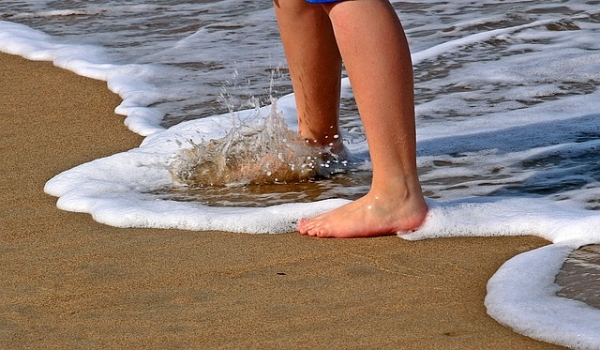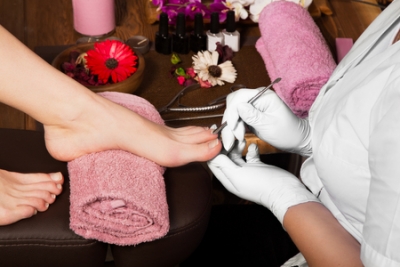Connect With Us
Blogs

Foot Care Safety Tips (3)
Hiking is a great way to stay in shape, spend time with family and friends, and appreciate the beauty of nature. At Superior Foot & Ankle Care Center, we want our patients to keep their feet safe while enjoying this activity. Below are some recommendations before you hit the trail.
Shoe Sense—it all starts with the right hiking shoes or boots. The terrain on trails can be steep, uneven, and unstable. It’s essential that you have the proper foot gear. Get professionally fitted and buy quality-hiking shoes that protect your feet from moisture, provide good support and shock absorption, and have a tread to help prevent slips and slides. If you have chronic foot problem such as weak ankles or heel spurs, see our podiatrists, Dr. Victoria M. Foley or Dr. Constance Ornelas get recommendations for shoe styles and other modifications that will best accommodate your condition.
Proper Planning—if you are planning to hike on a trail you’ve never been on, study a map to determine the length of the trail, whether it’s “in and out” or a circle, the elevation, and how the trail is maintained. Take into consideration your current physical condition and don’t overdo it. Warm-up and stretch before starting a hike to avoid injuries like Achilles tendonitis.
Knapsack Know-How—in addition to granola bars and plenty of water (which will not only keep you hydrated but also reduce the chances of painful swelling in your feet and ankles), you should include a few other items in your backpack. Blisters, though small, can ruin a hike. Pack moleskin and use it as soon as you notice rubbing or a sore spot on your foot. It’s also a good idea to have wraps or elastic bandages in case of an ankle sprain and bandages and antibiotic ointment for minor scrapes or insect bites.
Foot and ankle injuries require immediate medical attention. If you fall, twist an ankle, or injure your feet or ankles in any way while hiking, contact our Long Beach office in Douglas Park, CA by calling (562) 420-9800 as soon as possible. Until you can get in to see us, follow the RICE regimen: Rest, Ice, Compression, and Elevation.
At Superior Foot & Ankle Care Center, we know that many of our patients like to relax by spending a day at the beach. However, besides rain, nothing ruins a beach day faster than a foot or ankle injury. Below are some easy ways to avoid foot trouble and enjoy some fun in the surf and sand.
Watch out for Jellyfish—a dead jellyfish that has washed up on the shore through its tentacles can still sting you. If this happens, use gloves to protect your hands and gently remove the tentacles. Apply vinegar or baking soda to help the pain and swelling decrease.
Wear Flip Flops—this is one of the few times that you will hear us recommend flip-flops, but for a beach day, they can help your feet in several ways:
- Getting from the car to your beach blanket, they will prevent the soles of your feet from being burned by the hot asphalt or the sand that’s been baking in the sun.
- For walks on the beach, flip-flops can protect your feet from cuts from sharp shells and puncture wounds from debris hidden in the sand.
- When using the changing area or restroom, flip-flops will keep you from coming in contact with bacteria, viruses, and fungus that cause athlete’s foot, warts, and other
Re-Apply Sunscreen—a water-resistant sunscreen that has an SPF of 15 or higher should be used on the tops and bottoms of your feet if you are laying out on the beach. To be effective in preventing sunburn, it needs to be reapplied every two hours, and after each time you take a dip in the ocean.
Bring Sneakers—if beach volleyball, Frisbee or other active games are part of your idea of fun at the shore pack sneakers in your beach bag. Wearing flip-flops or playing barefoot can increase your risk for an ankle sprain in the shifting sands.
Remember Your Water Bottle—drinking lots of water is not only essential for staying hydrated, it helps you avoid swelling of the ankles and feet which can be painful and make it difficult to fit into your shoes for the ride home.
If your beach day results in an injury, rash or other foot or ankle symptoms, make an appointment at our Long Beach office (562-420-9800) promptly so that our podiatrists, Dr. Victoria M. Foley or Dr. Constance Ornelas can examine your feet and treat any podiatric problems.
A pedicure at a professional salon is a relaxing treat that leaves nails looking pretty in sandals and open shoes. A fungal nail infection or a case of athlete’s foot, however, is not such a pleasant experience and one that we often see at Superior Foot & Ankle Care Center, as a result of poor sanitary practices at a salon. We want our patients to enjoy this “me time” activity safely. Below are some do’s and don’ts for ensuring you get a pedicure that will not harm your feet.
Do: Check out a salon you are considering for a pedicure before committing to an appointment. Visit first and observe the overall condition of the salon. Reputable salons are licensed and that certification from the state health or cosmetology department should be clearly displayed. Cleanliness should be a priority for the entire establishment. If restrooms are not clean, the floor is unswept, window sills are dusty or the cosmetologists themselves don’t have clean hands and nails, take the hint and go someplace else.
Don’t: use a whirlpool foot bath that has not been sanitized after the client before you. Some salons now have plastic inserts that can be thrown away after each customer.
Do: bring your own pedicure tools—clippers, files etc. Ditto for flip flops which should be worn at all times in the salon. If you do need to use the salon’s tools be sure that they come out of individually wrapped packages or are sanitized properly in a machine or with sanitizing solution.
Don’t: allow the nail technician to use razors to remove calluses or dead skin on your feet. This can create a cut that can lead to an infection.
Don’t: shave your legs right before your pedicure appointment. Better that you have hairy legs and avoid bacteria entering the skin through the tiny cuts caused by shaving.
Do: Make an appointment at our Long Beach office by calling: (562) 420-9800 if you do notice any signs of fungal infection, such as itchy, red patches on the skin of your feet or between your toes or nails that are getting thick, discolored or are starting to peel and crumble around the edges. Infections will not clear up on their own and can spread if left untreated. Our podiatrists, Dr. Victoria Foley and Dr. Constance Omelas will examine your feet and nails and prescribe the correct treatment if an infection has occurred.



